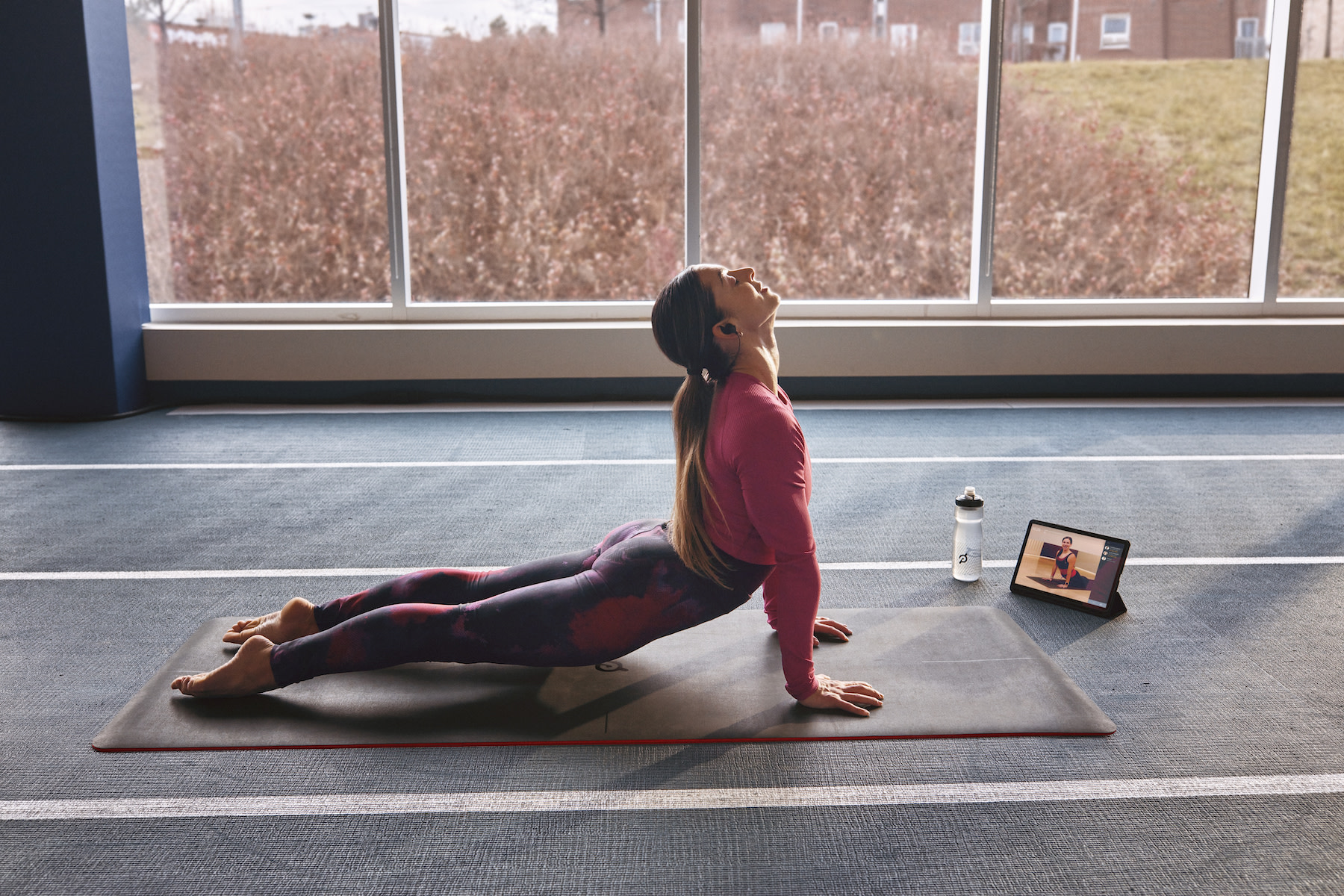The Different Types of Yoga
How to Pick the Best Type of Yoga for You
Incorporating Different Types of Yoga Into Your Workout Routine
Whether you’re a total pro at Pranayama breathing or you’ve barely unrolled your mat for the first time, yoga has plenty of benefits to offer everyone—and that becomes even more true once you realize how many types of yoga there are to choose from. That’s right: Not every yoga class has the same structure, the same poses and props, or even the same goals. Some types of yoga are more athletic and fast-paced, while others can help you calm down and destress. And while many types of yoga are physical, other styles lean more heavily into spirituality or breathwork.
The good news is that since there are many different styles, the odds are in your favor for finding the perfect fit. “When you’re starting a yoga practice, I think it’s like anything else in life; you go to sample a bunch of different ice cream flavors and find out which one you like the best,” says Peloton Yoga Instructor Kristin McGee. “There’s various styles and various teachers and you want to just find what teacher and what style and what type of practice resonates with you.”
So…where exactly do you start? We saved you hours of starting (and pausing) yoga classes until you find what you love by asking Kristin to explain more about the different types of yoga. Here’s your cheat sheet to the different yoga genres, plus expert advice on what type of yoga may be the best fit for you.
The Different Types of Yoga
1. Hatha Yoga
Too early for a “gotcha” question? You may have seen Hatha yoga advertised as an option in your local yoga studio and wondered what makes Hatha yoga different. Plot twist: According to Kristin, “Hatha yoga is the umbrella term for the physical practice of yoga.”
What to Expect with Hatha Yoga
Hatha yoga is probably what comes to mind when you picture a traditional yoga class. This type of yoga is slow and measured, and focuses on your breathing, deliberate movements, and asanas, or poses. In this type of yoga, you can challenge your strength, balance, and flexibility as you move through your flow—all without pushing yourself too hard or straying too far from relaxation and mindfulness.
Hatha Yoga Is for You If…
You’re a beginner looking for the pop music of yoga—a class that’s wide-ranging and appealing to many different populations, without being overly technical or intimidating. “I think everyone should try yoga because of its incredible benefits for the body and mind,” adds Kristin. “Hatha yoga’s postures build strength, steadiness, balance, focus, and flexibility.” Since you’ll move at a slightly slower pace during Hatha yoga, it’s a good place to start if you consider yourself a beginner or are looking to try a more gentle flow.
2. Vinyasa Yoga
Want to level up slightly from Hatha yoga? Meet Vinyasa. Vinyasa is a highly popular type of yoga that focuses on the connection between your breath, movement, and mind—and it can be done by anyone.
What to Expect with Vinyasa Yoga
Vinyasa flows are quite different from traditional Hatha flows, as they tend to be more fast-paced and string together poses in one fluid sequence without taking breaks between postures. There is a heavy focus on breath-to-movement synchronization, with inhale/exhale cues to be followed while you move from one pose to the next. If this is all sounding a little too intense for you, have no fear. Vinyasa yoga is very active, but there is still an internal focus to reap those mental health benefits of exercise, particularly before and after a flow is completed.
Vinyasa Yoga Is for You If…
You have a hard time sitting still and you prefer to put the “active” in “active recovery day.” With its fast pace and focus on shifting poses, you’ll feel happily challenged by Vinyasa. And heads up: Vinyasa yoga is perfectly fine for beginners too. In fact, since this is a very “mainstream” form of yoga, you’ll find lots of Vinyasa options when booking your first class.
3. Beginner Yoga
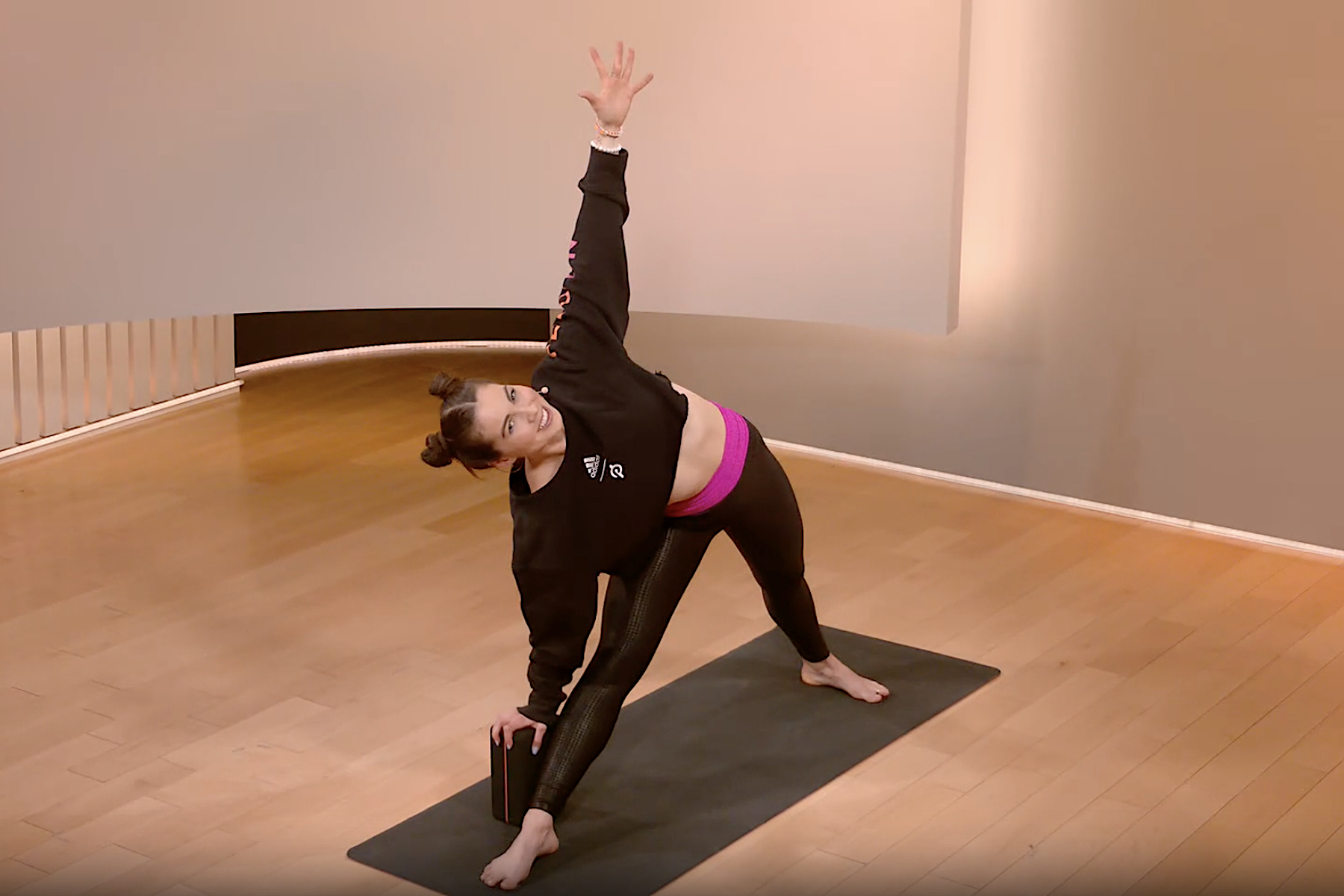
Want to “test drive” yoga and see if it’s right for you? Or just want a little more explanation of how to do certain poses? Beginner yoga classes are a great place to start.
What to Expect from Beginner Yoga
“In the beginner yoga class, you will start to learn some of the basic yoga postures,” says Kristin. “We will learn how to use the breath and movement and you will also start to get more comfortable in your body and creating certain shapes.” The flows in beginner yoga are gentle and tend to include some of the easier poses designed to increase strength and flexibility while reducing stress. There is usually a bit more instruction during beginner classes to ensure the poses are performed correctly and to avoid injury.
Beginner Yoga Is for You If…
You’re starting from ground zero (and if you are, welcome!). With the help of your instructor, you’ll feel confident learning, making mistakes, and yes, occasionally wobbling as you perfect your sun salutations. You may also go back to beginner yoga classes every now and then if you’re craving a little more hands-on instruction or suggestions for modifying poses (like if you’re injured and need a Pigeon Pose alternative).
4. Ashtanga Yoga
Want to use your yoga practice to squeeze in a more vigorous workout? Ashtanga yoga may give you that perfect blend of spicy and sweet.
What to Expect with Ashtanga Yoga
Ashtanga yoga centers on a robust physical practice, and the poses in the flow tend to put your strength and endurance to the test. There is very energetic breathwork involved, and Ashtanga classes tend to be really fun and fast-paced challenges if you want to strengthen your mind while pushing your body a little harder and bumping up your heart rate.
Ashtanga Yoga Is for You If…
You never back away from a challenge. While it’s not quite on the same level as yoga conditioning (more on that later), Ashtanga yoga is definitely a level up from Vinyasa. You may also gravitate toward Ashtanga if you’re dedicated to your strength workouts; the intensity of the poses can rival how you feel crushing leg day or a HIIT dumbbell class.
5. Prenatal Yoga & Postnatal Yoga

We know by now that pregnant people can safely work out during and after pregnancy (with doctor’s approval, of course). Whether you’ve been a yogi for years or pregnancy has introduced new aches and pains into your life, prenatal and postnatal yoga can help. In fact, studies have shown that the benefits of prenatal yoga are vast. It may help reduce pelvic pain, as well as improve the mental condition and perinatal outcomes like delivery time.
What to Expect from Prenatal and Postnatal Yoga
Prenatal yoga is essentially Hatha yoga that’s modified for people who are pregnant or recovering after giving birth. It’s gentle and emphasizes breathing and stretching that’s designed specifically for childbirth or postpartum preparation.
There are also postnatal yoga classes designed for new parents who are easing back into light movement once they’ve been cleared by their doctors for postpartum exercise. Postpartum yoga techniques may yield improved calmness, reduced irritability, increased energy, and lower blood pressure. Plus, postpartum yoga is a gentle way for new parents to start reconnecting with their bodies after such a life-altering experience of carrying and delivering a baby. Always remember to check with your health practitioner to get the green light before taking a prenatal or postnatal yoga class.
Prenatal or Postnatal Yoga Is for You If…
Welp, it’s pretty obvious—if you’re pregnant or have recently been pregnant. “Because yoga focuses so much on the mind-body connection, it’s wonderful for pregnant parents and parents who have given birth,” Kristin says. “It helps them get in touch with their body and figure out how to move gently. It also helps people start to build up strength again after pregnancy or to maintain some strength and flexibility during pregnancy.”
6. Power Yoga
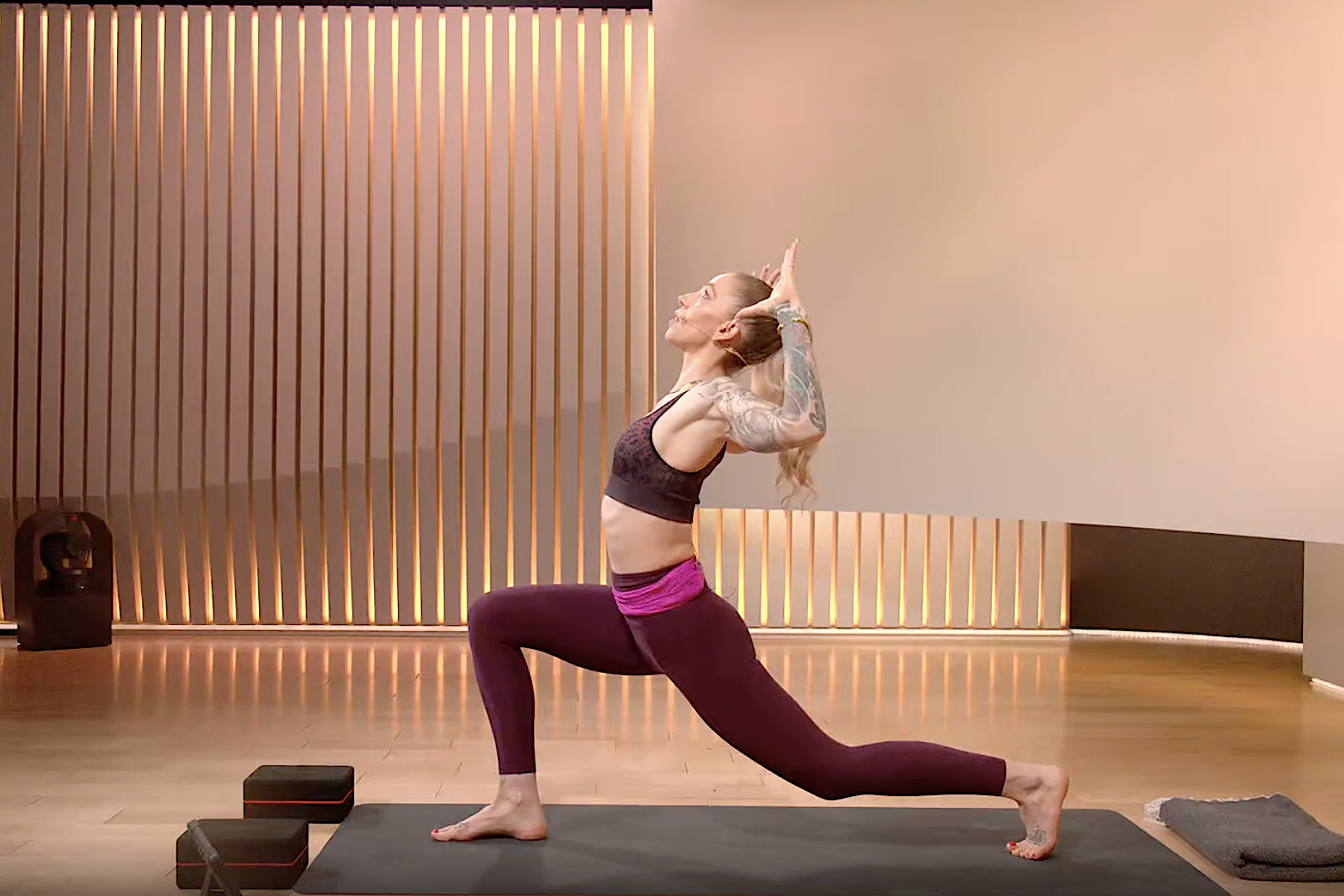
Superhero mode, activated. Power yoga is focused on building strength and endurance, and yeah—you’re going to work up a sweat.
What to Expect from Power Yoga
Much like traditional cardio, power yoga tends to be fast-paced, with more of an emphasis on switching poses and getting your heart rate up than on the flow of poses or the integrity of the postures. You’ll still be building flexibility and doing important breathwork, but the focus in power yoga is building strength and intensity with high-impact poses. Some power yoga classes even have a little bit of traditional cardio work involved (read: you might see a burpee).
Power Yoga Is for You If…
You’re ready to challenge your athleticism. This is one type of yoga where having a strong fitness foundation will help. In fact, being physically conditioned and comfortable working out may be more important for power yoga than knowing your way around an asana. “A strong athlete who has never done much yoga might be OK with power yoga,” Kristin says. “The power yoga focus is more on strength and giving a full body workout. Teachers vary the style as well, so it always depends on who’s teaching the class.” But at the end of the day, she says, “you do not have to be an advanced yogi to start practicing power yoga if it’s a style that you like.”
7. Slow Flow
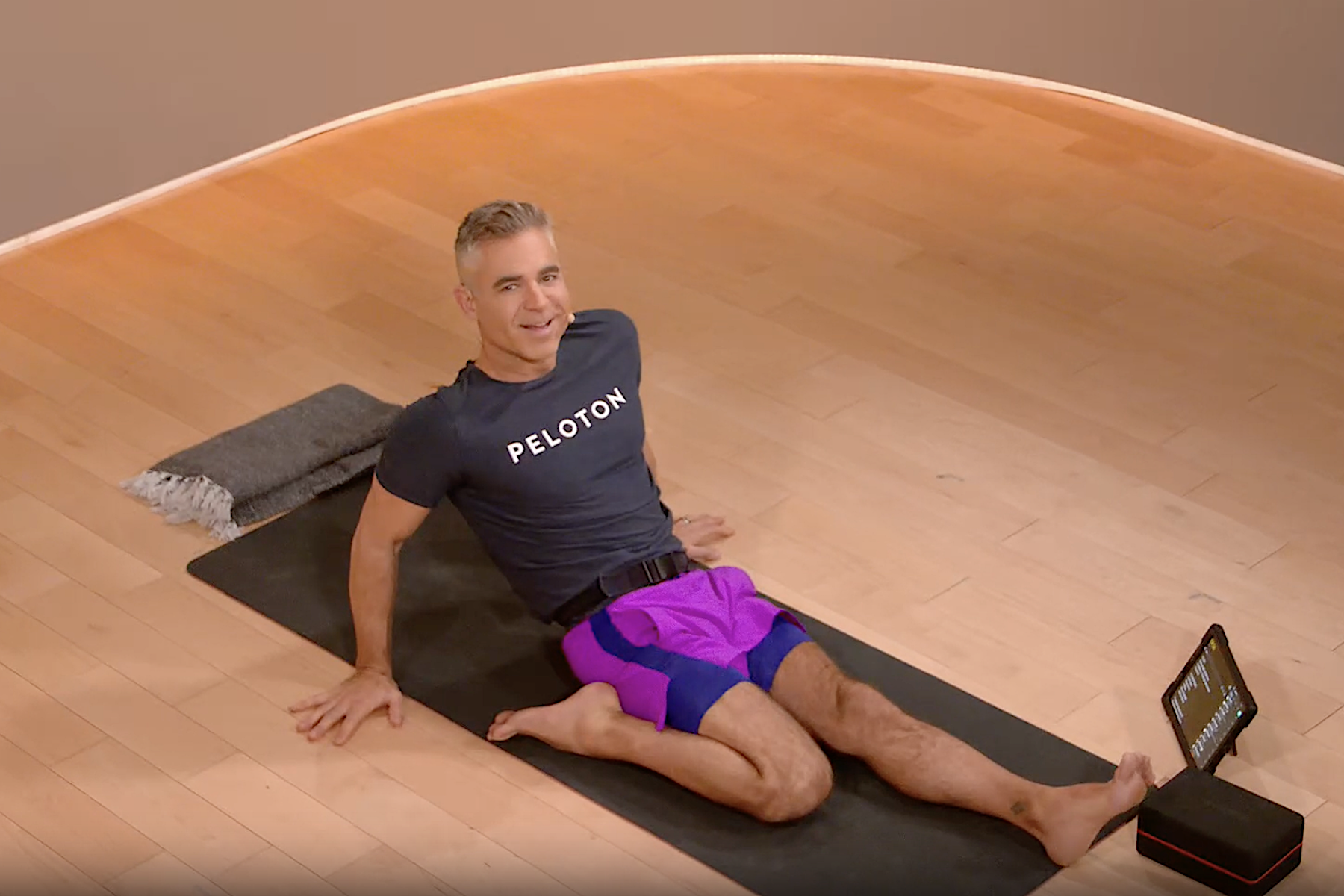
If Vinyasa and Ashtanga yoga sound too fast for you, good news: There’s an opposite end of the spectrum, and it’s slow flow yoga. Slow flow typically moves at about half the usual speed, so you’ll move through fewer poses than you will in other classes.
What to Expect from Slow Flow Yoga
Long holds and finding comfort in being uncomfortable—but at the same time, you won’t push yourself past your edge. The pace of a slow flow practice is meant to be meditative, with a heavy emphasis on calming the body and mind while infusing your movements with peace. Poses are held for much longer and for a certain amount of breathing cycles. In traditional flow yoga, you can expect to move with your breath, but in slow flow yoga, you’ll be holding and achieving stillness with your breath.
Slow Flow Yoga Is for You If…
You want a cross between Yin yoga (more on that soon) and Vinyasa. Slow flow is also a great place to start if you’re a beginner and really want to sink into these new positions.
8. Restorative Yoga

If you’re craving rest, relaxation, and permission to take a catnap during yoga class, look no further than restorative yoga. With its focus on total muscle relaxation and long, leisurely poses, restorative yoga is the antidote to our fast-faced, high stress world.
What to Expect from Restorative Yoga
Compared to a traditional yoga class, restorative yoga poses are held for a much longer duration. You’ll also need to level up your prop game. Yoga blocks, bolsters, straps, and pillows are recommended to allow you to deepen your poses and encourage your body to fall into a restful state of bliss. Additionally, there shouldn’t be any straining or tension. This type of yoga isn’t meant to get your heart rate up or be a traditional workout—so rest easy, champ.
Restorative Yoga Is for You If…
You just need a little break—which is all of us, really. “I think everyone can try our restorative yoga class,” Kristin says. “It’s really great for the nervous system. It’s all about finding deep relaxation and being held by props in certain yoga postures. And in today's busy world, it’s nice to have a practice that helps you slow down and recover and open up the body.” Not only is restorative yoga ideal for stress relief, but it’s also recommended for people with chronic injuries or wear and tear. You can even try a few restorative yoga poses before bed to get your body into a more relaxed state before sleep.
9. Yoga Conditioning
For a more modern (and okay, kind of intense) take on yoga, you might be curious about yoga conditioning classes. Yoga conditioning classes incorporate light weights to build your strength up for specific yoga postures, and they’re highly effective as stand-alone strength and cardio workouts too.
What to Expect from Yoga Conditioning
A little bit of strength training, a little bit of yoga. You may use light weights or other props during certain poses to challenge your body in a new way with added resistance, or you may use them to build certain muscle groups used frequently during yoga poses. In the latter case, think of yoga conditioning as a bridge between your current self and your future yogi; you’re actively training your muscles to achieve poses or inversions that aren’t currently in your practice.
Yoga Conditioning Is for You If…
You’ve never tried strength training before—whether you were a little intimidated or it just didn’t interest you. Yoga with weights is a great way to build resistance training into your weekly yoga practice. Similarly, yoga conditioning can help beginner yogis progress their practice safely, while still maintaining perfect form. “[Yoga conditioning is] great for a lot of yogis who are used to pressing type movements as opposed to pulling type movements,” notes Kristin. “Yoga conditioning just conditions the body in a different way and can benefit your yoga practice as a whole.”
10. Yin Yoga
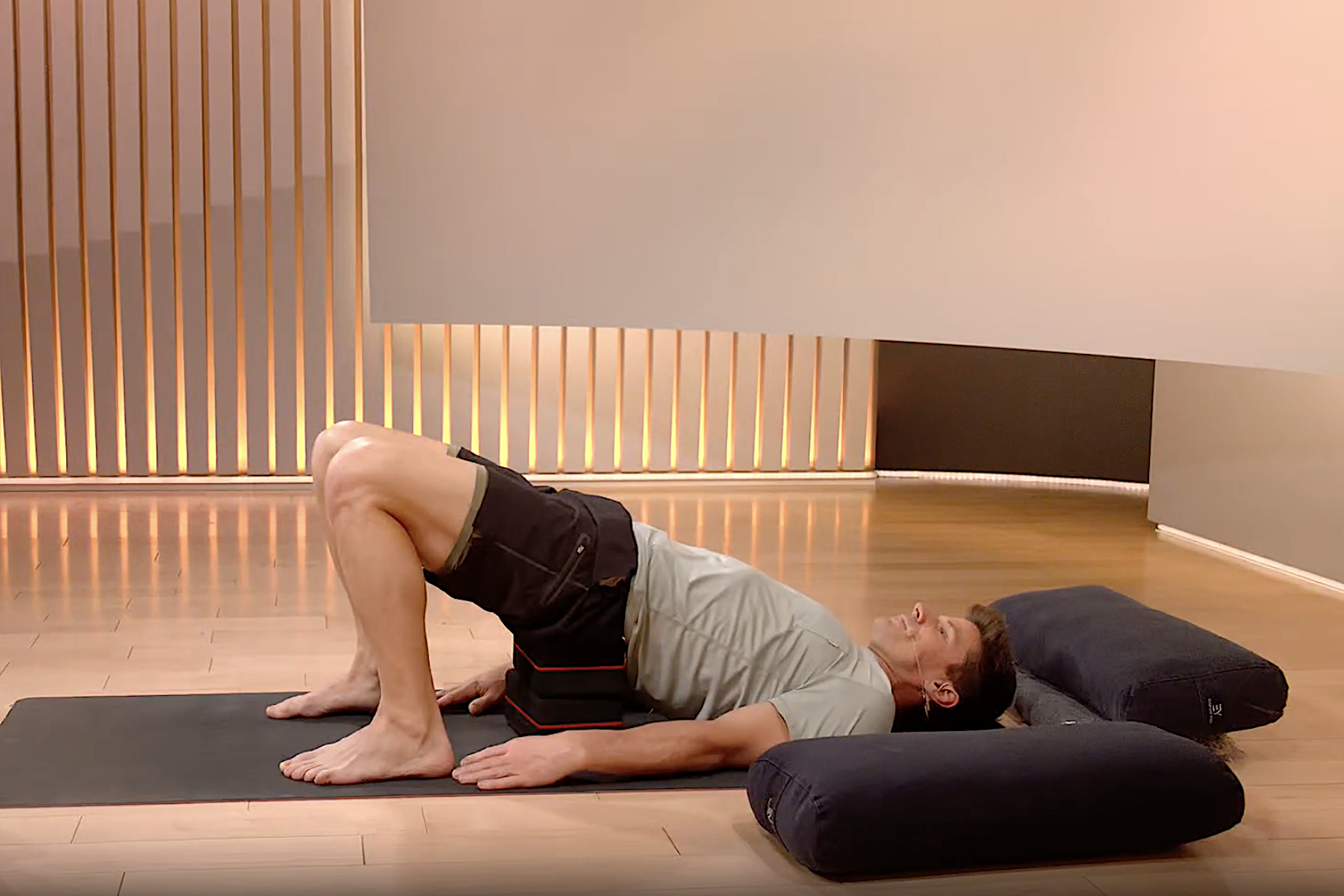
Similar to slow flow yoga, Yin yoga involves holding poses for much longer periods of time. The ultimate goal is to stretch and lengthen your muscles while really getting into that deep connective tissue for a juicy, healing stretch.
What to Expect from Yin Yoga
While slow flow yoga is still a flow (that is, you move smoothly from one position to the next), Yin yoga takes a much more discrete approach to poses. You’ll hold one pose for three to five minutes, then move on to a completely different pose without any kind of transition or sun salutation.
It’s also totally normal to feel like Yin yoga is mentally tough (even if your heart rate stays pretty low throughout class). That’s because as discomfort builds from holding poses for so long, Yin yogis are encouraged to cultivate a deep inward focus, which helps create space to tune into the mind and body. The practice of deepening into and breathing through poses for several minutes at a time helps the body and mind “unblock” and release unwanted negative energy.
Yin Yoga Is for You If…
You have specific knotty areas in your body that need some TLC. You can expect Yin yoga postures to help you focus on releasing tight areas around the joints, like your hip flexors and spine. Yin yoga can also be a gateway for new yogis, since it’s similar on the surface to static stretching.
11. Chair Yoga
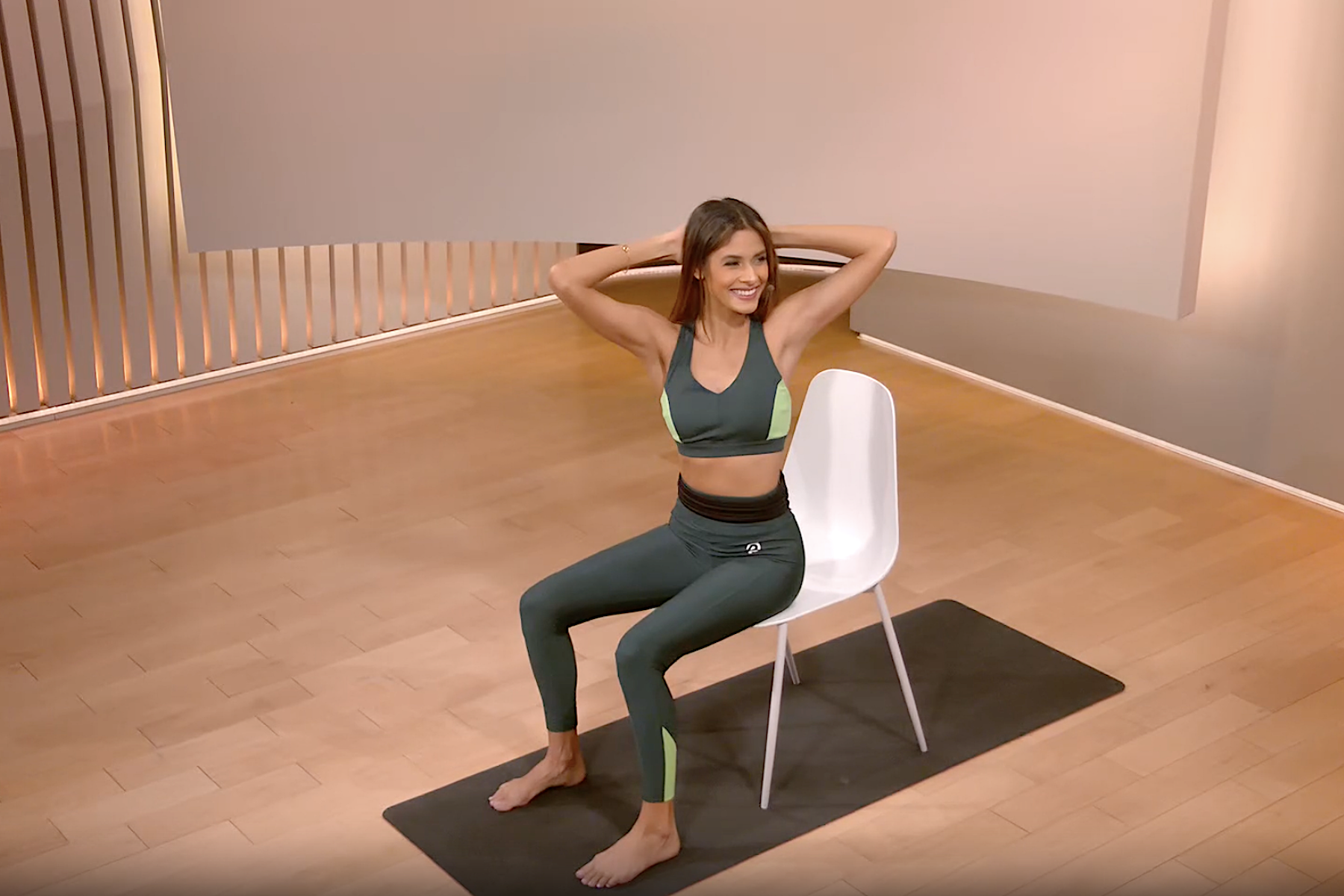
For an “anywhere, anytime” type of yoga, chair yoga is worth a try. In chair yoga, you’ll use—you guessed it— a chair as your main prop. Poses are done either sitting on the chair or using the chair for support.
What to Expect from Chair Yoga
Chair yoga is a gentle but still highly effective flow, perfect for beginners or for anyone that may have decreased mobility. Chair flows offer many of the same benefits as standing yoga, without the added worry that you may be causing your body too much strain. If standing and balancing postures in yoga aren’t for you, chair yoga can be done sitting on a chair, or using a chair for support.
Chair Yoga Is for You If…
You’re a desk worker whose smartwatch yells at you to move every hour on the hour. Try incorporating chair yoga into your coffee breaks. That way, you can squeeze in a subtle (and short) workout that won’t make you miss an important Slack message. “[Chair yoga is] also ideal for people who have limited mobility in certain areas, for people who are injured, for people who are pregnant, and for the elderly,” adds Kristin. “It has all the benefits that you get for yoga practice, but it’s just a lot more accessible because many people are used to being stuck in their seat.”
12. Kundalini Yoga
For a more spiritual type of yoga, Kundalini yoga is a great place to start. The focus in Kundalini classes is tuning in with your inner self and hearing your own inner voice above all the noise.
What to Expect from Kundalini Yoga
A Kundalini flow is more internal than external. Kundalini classes and practices typically include chanting, gentle spine exercises, guided meditation, and sometimes even singing. The poses are repetitive and meant to “wake up” your spine, and there is a significant focus on breathwork for more of a tangible energy connection.
Kundalini Yoga Is for You If…
You’re looking to find your own inner voice and calm your mind. This highly spiritual practice is totally unique and requires you to be present with yourself—go into it with an open mind.
13. Iyengar Yoga
Want a technical challenge that keeps you mentally and physically engaged all class long? Iyengar yoga may be the best type of yoga for you. In Iyengar yoga, you’ll notice a heavy emphasis on the structural alignment of the body and a big focus on precision.
What to Expect from Iyengar Yoga
Precise, clear cues and attention to detail that would make a Type-A Virgo blush. Since there is such a heavy focus on pose integrity in Iyengar yoga, most classes encourage props like blocks, straps, and blankets for postural alignment. While there is still a focus on breathwork, there’s less focus on exertion during the traditional standing, seated, and relaxation poses than you might experience in Hatha yoga.
Iyengar Yoga Is for You If…
You’re just learning yoga poses. Since proper alignment is paramount and Iyengar classes move at a slow and deliberate pace, this is a great form of yoga for beginners or anyone that needs to ensure their yoga flow is a little slower or more precise.
How to Pick the Best Type of Yoga for You
Now that you know the various types of yoga, it’s time to start experimenting. Remember, you’re never bound to only do one type of yoga for the rest of your life. That said, there are a few key elements that may help you differentiate the styles and types of yoga in your search for the best fit.
Mindfulness and Being Present
Some aim to help seasoned and aspiring yogis alike connect with their innermost selves by cultivating the type of meditation strategies that can help block out all the noise and stress. This type of practice is less about movement and more about being still and remaining in the here and now—which, as we all know, is a huge challenge in and of itself. But with practice, it gets easier, and the benefits are numerous.
Lengthening and Stretching
Other types of yoga are primarily meant to help yoga practitioners become more flexible and tend to be focused on lengthening and relaxing the muscles rather than strength-building. Here, the focus is on restoring the body and mind with deep stretching instead of working up a sweat, with the goal of increasing your range of motion in the long term.
Strength and Cardio
There are also certain yoga practices, like power yoga, that are more focused on fitness (think: building strength and getting in cardio) and can truly be considered a full-body workout. In these instances, yoga is about getting your heart rate up and building endurance.
While there are different types of yoga, you may find that most yoga classes tend to include some combination of a variety of styles, including an overarching focus on strengthening the mind-body connection.
Incorporating Different Types of Yoga Into Your Workout Routine
The takeaway here is that there are many, many types of yoga to match your personal preferences and goals. Most classes combine elements of the types of yoga discussed above. Depending on how often you practice yoga, you can switch up your classes until you hit on a routine that works for your goals and your lifestyle—and thanks to the Peloton App, you don’t even have to leave your home (or pay expensive class fees) to try different types of yoga. With a dozen different types of yoga to choose from (not to mention the variation in class lengths and instructors), you have an endless variety of ways to incorporate yoga into your daily life.

Peloton App
Access thousands of classes with no equipment needed.
“The yoga practice is beautiful because it helps you really get in touch with yourself and what's right for you,” Kristin says. “So just keep experimenting with different types of yoga until you find one that really resonates. Pretty soon you may have your own home practice, or you might like going to a studio, or you may like practicing online—whatever it is that keeps you coming back to your mat.”
This content is for informational and educational purposes only and does not constitute individualized advice. It is not intended to replace professional medical evaluation, diagnosis, or treatment. Seek the advice of your physician for questions you may have regarding your health or a medical condition. If you are having a medical emergency, call your physician or 911 immediately.
Level up your inbox.
Subscribe for a weekly dose of fitness, plus the latest promos, launches, and events.
By providing your email address, you agree to receive marketing communications from Peloton.
For more about how we use your information, see our Privacy Policy.
